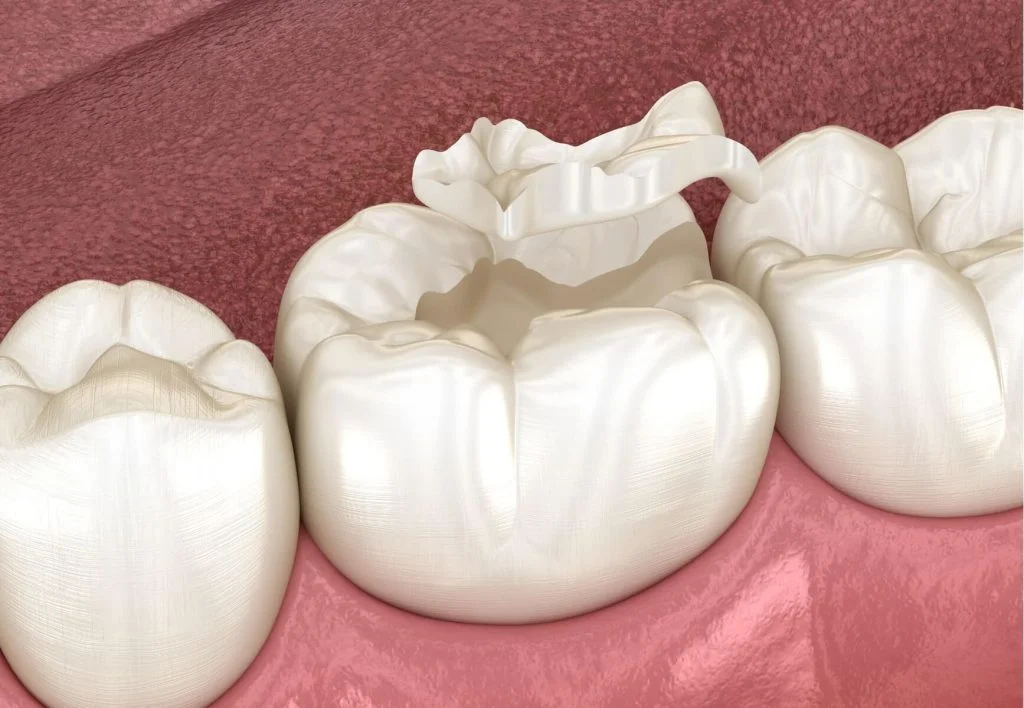Tooth filling fell out, which is a frequent reason for visiting the dental office, can cause discomfort or pain, although at other times it may not cause any symptoms at all. In either case, it is necessary to seek help from a professional.
What types of dental fillings are there?
Dental fillings can be:
A. Permanent: Materials such as amalgam, resin, gold, or porcelain are generally used for permanent fillings. They are selected as a treatment for caries, or after a finished root canal treatment. However, they are used as a definitive treatment, they have a useful life that varies according to the material used.
B. Temporary: Temporary dental fillings are placed for a pending procedure, such as a root canal, with the objective of avoiding contamination of the cavity and protecting the ongoing treatment from the entry of bacteria and food residue.
What to expect when a tooth filling fell out?
When a dental filling falls out, you could experience:
• Increased sensitivity to cold, heat, or contact with sweet foods.
• Pain in the tooth where the filling used to be.
• Discomfort when feeling the hole in the tooth.
What should you do if your filling comes loose?
• Avoid swallowing or biting it, as it could damage other teeth.
• Try to keep the filling that has been released, especially if it is a gold or porcelain filling.
• Call the dentist and make an appointment.
• Carry out a good brushing that eliminates the residue of food from the interior of the cavity.
• Rinse with warm water and salt after eating to reduce the presence of bacteria in the area.
• Avoid sticky food or food that can get stuck in the cavity.
• Chew food on the opposite side of the affected tooth.
• If the pain is severe, take an over-the-counter pain reliever.
Although there are over-the-counter temporary dental fillings in pharmacies, it is not recommended to seal the cavity without a thorough examination and cleaning. If a filling is placed in a cavity that is not clean, it could facilitate the progression of caries.
Also, if it is a tooth with a root canal treatment in progress, this could lead to further infection. In such cases, it is essential to consult with a qualified dentist, and if necessary, undergo endodontic surgery to address the underlying issues and ensure proper treatment of the tooth.
Why should you seek immediate dental care?
The loss of a dental filling is generally not considered an emergency, but it is recommended to receive care as soon as possible. There are 5 reasons why it is important to see a dentist quickly when a dental filling falls out:
1. The presence of a cavity in a tooth can cause bacteria to accumulate and cause cavities.
2. When a filling falls out, the nerve of the tooth is more exposed to temperature changes, which can cause it to swell irreversibly and, therefore, may require root canal treatment.
3. The fillings complement the dental structure, so if it comes loose, the tooth is more fragile and prone to fractures.
4. The dislodgement of a filling can herald a larger problem, such as deep cavities or dental fractures.
5. If the tooth has a completed or ongoing root canal treatment, the falling out of the filling can cause it to become contaminated and damaged, which could lead to infection, pain, and even the need for a repeat procedure.
We also have a comprehensive guide about the connection between root canals and cancer that might help other patients and people who are planning to undergo with root canal.
What caused the filling to fall out?
There are many reasons why a dental filling can fall out. The most frequent are:
• Very old fillings
• Fractures of the tooth or filling
• A new cavity under or around the filling
• Failure of the chemical bond between the filling and the tooth
• A strong bite
• Clenching or grinding of the teeth (bruxism).
• Improper care or maintenance.
• Occlusal trauma: teeth that receive more load than they should, either due to a Bad position in the mouth or the absence of other teeth.
• Improper use of teeth: opening containers, holding things in the mouth, biting objects, etc.
How to prevent fillings from coming loose?
To prevent temporary fillings from coming loose:
• Do not eat food within 2 hours of placement.
• Try not to chew on that tooth until a permanent filling has been placed.
• Prefer soft foods.
• Use the dental floss carefully, introducing it into the interdental space with light pressure.
To prevent permanent fillings from coming loose:
• Brush your teeth with fluoride toothpaste after every meal.
• Check and maintain your restorations every 6 months.
• Do not eat foods that are too hard.
• If you grind or clench your teeth, seek professional help to develop a protective bruxism plate.
• If you have lost teeth in the past and have not replaced them, consider using dentures or implants, since the absence of some teeth can cause the remaining ones to be overloaded, increasing the risk of dental fractures and fillings.
Frequently Asked Questions
What is the safe duration to leave a fallen-out filling?
Typically, a missing or loose filling isn’t considered an urgent dental problem. However, if you experience severe pain or notice bleeding and inflammation of your gums, it might require emergency dental care. In most cases, you can wait for up to 3 days before seeking treatment.
What occurs if a filling falls out and is left unattended?
Although not an extremely urgent dental emergency, seeking prompt medical attention is still necessary. A loose filling exposes your tooth, making it susceptible to decay. Consequently, food particles, bacteria, and other debris can enter the exposed cavity, potentially leading to further issues.
Is there a limit to how many times a filling can be replaced?
There isn’t a fixed number of replacements per tooth. It’s essential to consider that with each filling placement, some natural tooth material is removed to make space for it. If too much of the natural tooth structure is lost, an alternative solution may be required to fill the gap.
How can you tell if a filling is compromised?
• Signs of damage: Fillings can occasionally fracture or break.
• Pain in the Tooth: sometimes, there might not be visible signs of damage, but you could experience tooth pain.
• Flossing: If you have a filling on the side of a tooth, flossing may cause it to shred or get stuck.
• Bad breath and bad taste: A damaged filling can lead to bad breath or unpleasant taste in your mouth.
Share:
References
1. Clarius, A. (Dec 18, 2020).Filling fell out. NewMouth; Dentistry Brands LLC. Retrieved from: https://www.newmouth.com/oral-health/filling-fell-out/
2. Dental Emergency – What if I break a Tooth? (s/f). Mouthhealthy.org. Retrieved from: https://www.mouthhealthy.org/en/dental-care-concerns/dental-emergencies
3. Hecht, M. (Mar 26, 2020).Filling fell out of your tooth: What to do, steps to take. Healthline. Retrieved from: https://www.healthline.com/health/what-to-do-if-your-filling-falls-out
4. Porter, R. (Apr 5, 2023). Filling fell out? Fix and prevent lost restorations. Dentaly.org. Retrieved from: https://www.dentaly.org/us/tooth-filling/filling-fell-out/
5. Communications, A. D., & Journal of the American Dental Association. (2005). For the dental patient. When a filling needs to be replaced. Journal of the American Dental Association (1939), 136(7), 1062. Retrieved from: https://jada.ada.org/action/showPdf?pii=S0002-8177%2814%2963067-1
6. Mandke, L. (2016). Importance of coronal seal: Preventing coronal leakage in endodontics. Journal of Restorative Dentistry, 4(3), 71-71. Retrieved from: https://go.gale.com/ps/i.doid=GALE%7CA461035559&sid=googleScholar&v=2.1&it=r&linkaccess=abs&issn=&p=HRCA&sw=w&userGroupName=anon%7E7b07a4b5&aty=open+web+entry
-
Nayibe Cubillos M. [Author]
Pharmaceutical Chemestry |Pharmaceutical Process Management | Pharmaceutical Care | Pharmaceutical Services Audit | Pharmaceutical Services Process Consulting | Content Project Manager | SEO Knowledge | Content Writer | Leadership | Scrum Master
View all posts
A healthcare writer with a solid background in pharmaceutical chemistry and a thorough understanding of Colombian regulatory processes and comprehensive sector management, she has significant experience coordinating and leading multidisciplina...

















